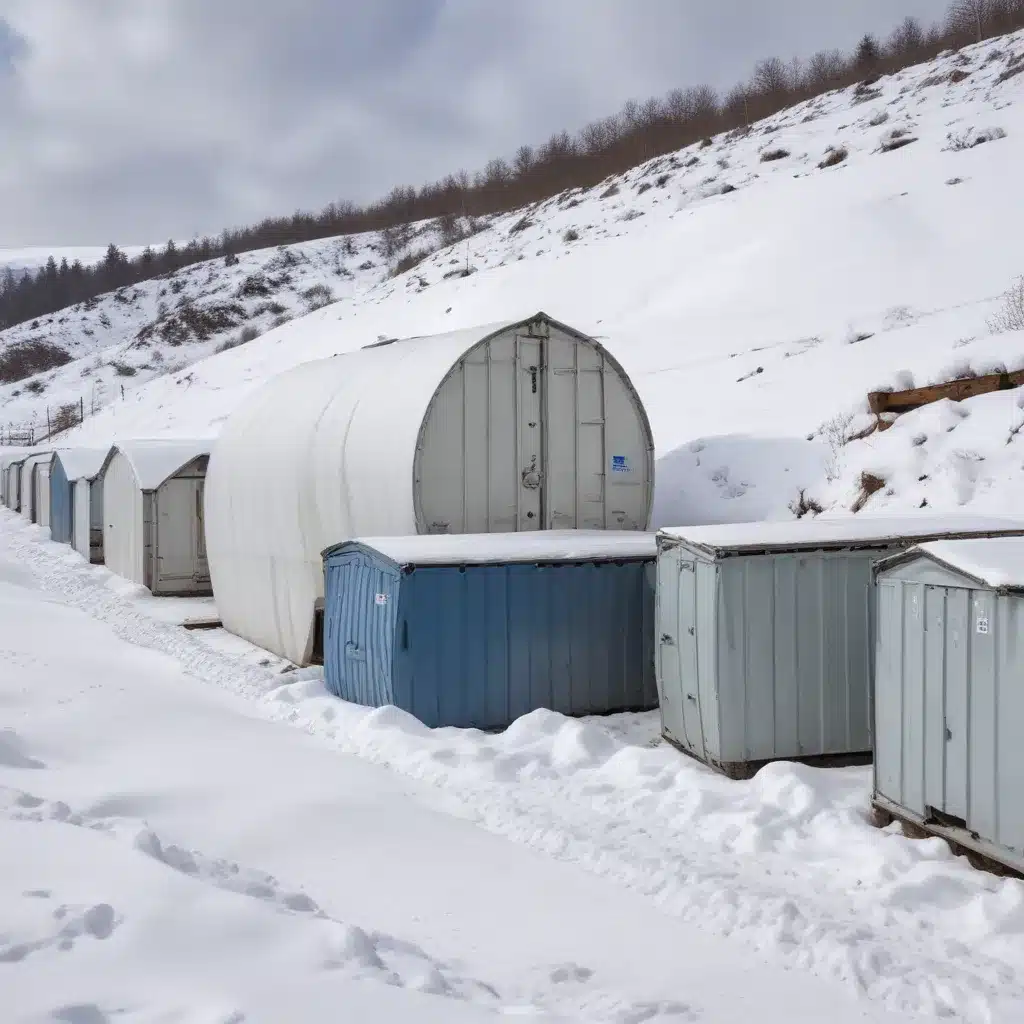
The Importance of Snow Storage in Ski Resorts and Winter Sports Events
Snow security plays a crucial role in ensuring the success of winter sports events and supporting the ski industry. One effective approach to enhancing snow reliability is through snow storage. Despite its potential benefits, investigations of snow storage in China have been limited. To address this gap, researchers implemented snow storage covered with geotextiles at two venues – the Big Air Shougang (BAS) in Beijing for the Beijing 2022 Winter Olympic Games and the National Biathlon Center (NBC) in Chongli for the Beijing 2022 Winter Paralympic Games – in response to possible extreme meteorological conditions.
The main objectives of this study were to:
- Investigate the evolution of snow piles and the factors influencing them.
- Assess the performance of the SNOWPACK model in conjunction with investigation data from China, particularly in mid-latitude and low-altitude regions.
- Identify significant considerations in snow storage based on the aforementioned investigation and validation of the SNOWPACK model.
By accomplishing these aims, the researchers aimed to provide a comprehensive technical procedure and knowledge of snow storage and its effects, given the rapid growth of the Chinese ski industry.
Monitoring Snow Storage Sites and Meteorological Conditions
The researchers implemented a fine-snow-pile monitoring system and the SNOWPACK model to assess the key concerns associated with snow storage, including ablation (the process of snow loss) and snow properties.
At the BAS site in Beijing, snow production for storage began on December 26, 2021, and continued until January 11, 2022, using two snow fan guns. The shape of the snow pile was adjusted by moving the snow fan guns. On January 21, 2022, a 0.004 m thin reflective layer (geotextile) was used to cover the snow pile.
The NBC site in Chongli, located approximately 52.63 km northeast of Zhangjiakou, had a snow pile established adjacent to the Para tracks by adjusting the snow fan guns and covering the pile with a 0.004 m thin geotextile on January 20, 2022.
Meteorological conditions surrounding the snow piles were recorded using two automatic meteorological stations installed adjacent to the snow piles. Additional data were obtained from nearby national meteorological stations.
Analyzing Snow Pile Evolution and Snow Properties
The researchers used a Riegl VZ® -6000 Class 3B terrestrial laser scanner (TLS) to obtain high-resolution repeated geometrical data of the snow piles at the BAS site. Four temporal TLS data surveys were performed between January and April 2022. At the NBC site, only one TLS survey was conducted on January 20, 2022.
Snow density was measured 3 m below the top surface using ice core drilling with extension rods at both the BAS and NBC sites in January 2022.
The SNOWPACK model was employed to simulate the top-position evolution of the snow piles where the geotextile–snow interfaces were fitted with sensors and unaffected by geotextile overlaps at both the BAS and NBC sites. The model was also used to simulate snow storage at the tops of the snow piles over the summer season.
Findings and Insights
Significant Snow Loss at the BAS Site
By February 18, the snow pile at the BAS site had lost 158.6 m3 of snow (equivalent to 6.7% of the initial volume). Subsequently, the accelerated ablation was influenced by meteorological conditions and the thin geotextile layer. Between January 16 and April 15, the snow pile at the BAS experienced a total loss of 1242.9 m3 of snow (corresponding to 52.7% of the original volume).
The researchers discourage the use of impermeable coverage schemes for snow storage, as the evaporation of the geotextiles contributed to slowing the ablation process. The thickness of the cover played a vital role in preserving the snow pile, with the 0.7 m thick cover layer at Beijing and the 0.4 m thick cover layer at Chongli protecting approximately half of the snow pile height over the summer season.
Minimal Variations in Snow Properties
Regarding snow properties, no significant variations were modeled at the study sites, except for the upper part of the snow piles. The evolution of snow properties was consistent across the different cover thicknesses.
SNOWPACK Model Performance
The SNOWPACK model demonstrated its capability to accurately reproduce the snow pile evolution in mid-latitude and low-altitude regions of China. While there was a slight underestimation (7%) in the top snow pile height drop at the BAS site, the model exhibited excellent agreement with the measured snow pile height, especially considering the sensitivity to deviations of a thin geotextile layer.
Insights for Sustainable Snow Storage
The findings of this study have implications for the ski industry in China, as they provide valuable insights into snow storage techniques and their impact on snow reliability. The researchers discourage the use of impermeable coverage schemes for snow storage and emphasize the importance of cover layer thickness in preserving the snow pile.
The study revealed that 0.4 m thick cover layers could protect half of the snow pile height in Chongli between January and October 2022, while in Beijing, the required thickness increased to 0.7 m. The evolution of snow properties over the summer, with different thicknesses and sites, exhibited consistent patterns.
Conclusion and Future Directions
This comprehensive analysis of snow storage in China provides a valuable technical procedure and insights for the ski industry. The researchers highlight the need for further investigation into the economic impacts of snow storage, as well as exploring short-term snow storage for regions with short snowmaking hours and high wet-bulb temperatures.
Overall, the findings of this study contribute to a better understanding of snow storage techniques and their effectiveness in ensuring snow reliability, particularly in the face of climate change and uncertain winter snowfall. By embracing sustainable snow storage practices, the ski industry can enhance its resilience and secure a vibrant future for winter sports events and activities.

